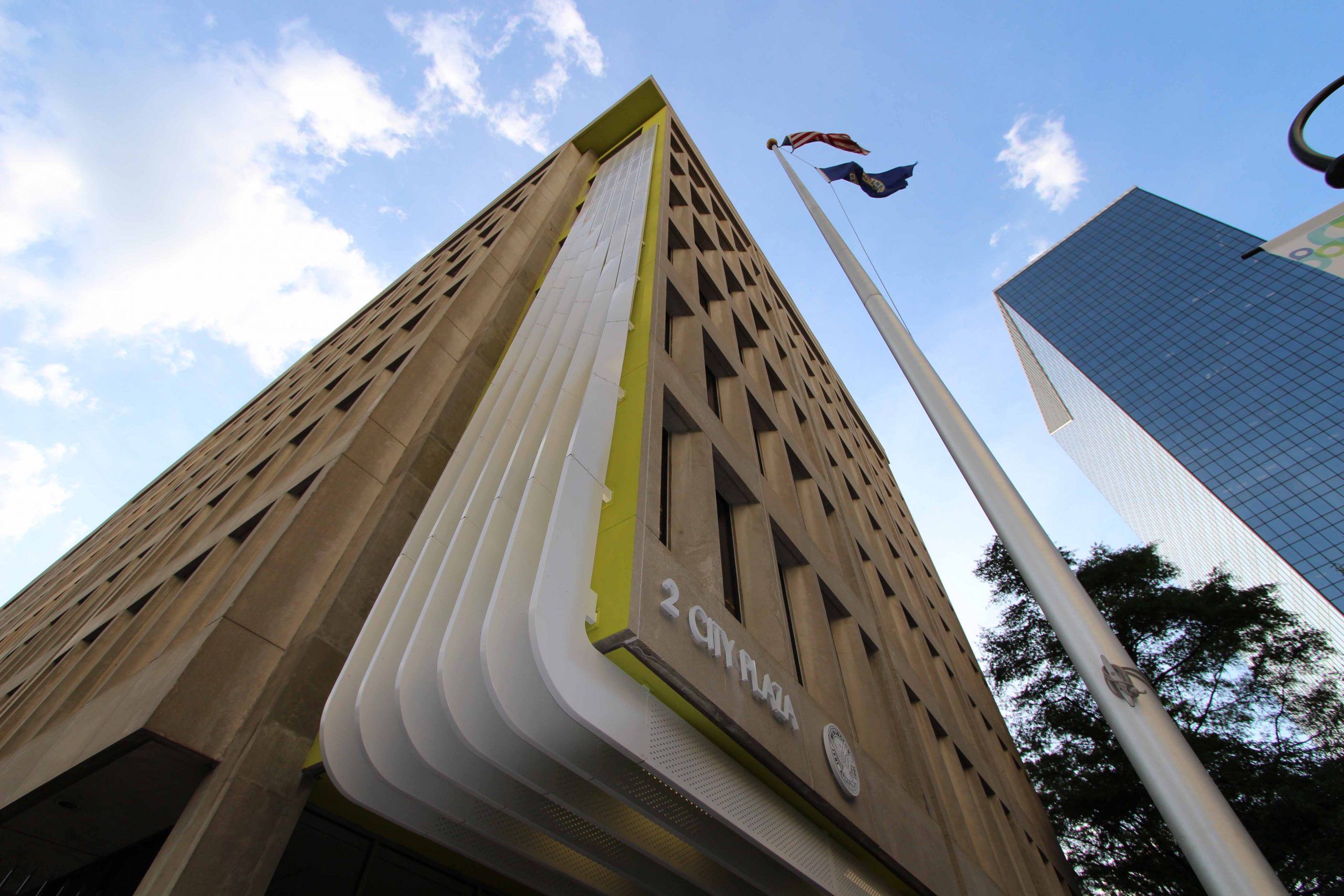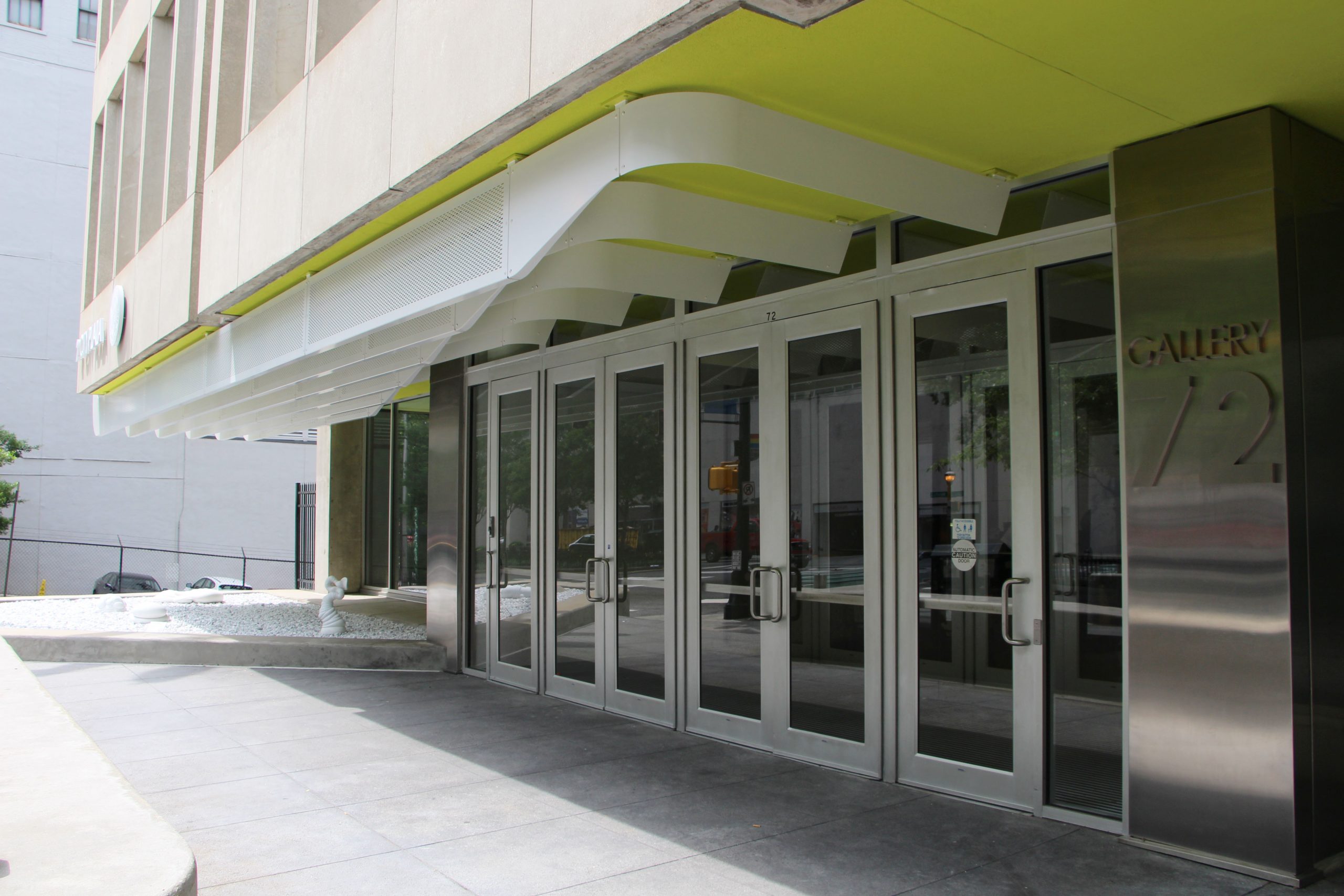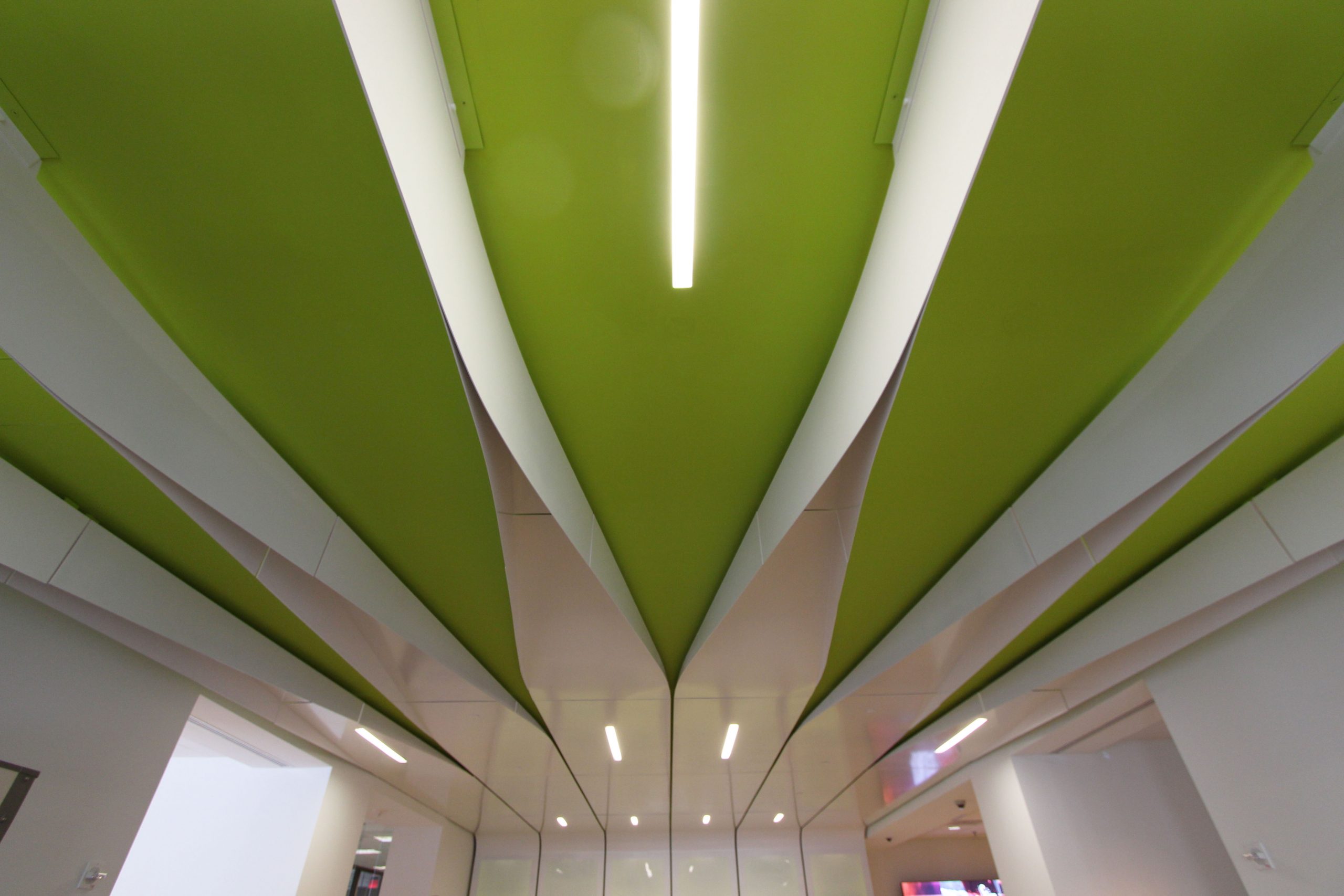



Client: City of Atlanta Office of Cultural Affairs
Location: Atlanta, GA, United States
Completion date: 2014
Artwork budget: $350,000
Project Team
Architect
Clay Cameron
Stanley Beaman & Sears
Overview
Gallery 72 is located on the first floor of the former Atlanta Journal and Constitution Building and is now home to the City of Atlanta’s Dept. of Watershed Management. The south gallery features a variety of art forms while the north gallery will focus on digital artwork. A 2500 SF architectural art assembly extends up the back wall behind the reception desk, traverses the lobby ceiling and extends through the existing vestibule below entry canopy of the building is intended to provide the catalyst to pull pedestrians from the street into the galleries on the first floor of the building.
Goals
Taking cues from former paper presses that were housed in the building the twisting forms of the marquee panels allude to the conveyors used in the production of newspapers and pay subtle homage to the AJC. The sinuous panels also evoke the nearby rail junction, referred to as "The Gulch" and also the historic trolley car tracks and lines that traversed Marietta Street back in its heyday. Historic references were key generators for the design and intentional strategies to relate the forms back to the history of the building and the surrounding area.
Process
"The ribbons are a fantastic sculptural element, and their transition from wall treatment to ceiling fixture to exterior signage is exciting and activates both the exterior and interior of the building" quote by Michael Kahn with Arts Atlanta. Many collaborators were involved including Camille Russell Love and Courtney Hammond from the Office of Cultural Affairs and Mayor Kasim Reed. Other collaborators included IMG the fabrication and installation team and also Diamond Construction.
Additional Information
Made of powder-coated aluminum, the fins twist, converge, and are perforated to both reveal and conceal the green surface of the ceiling and wall behind. While this energetic form highlights the building entrance, the galleries that flank it fade into the background allowing the artwork to speak. Pure white flexible galleries provide the open floor plan needed to exhibit a diverse range of work. The North Gallery moderates light providing an ideal space for digital installations. Meanwhile, the South Gallery welcomes the light to reveal the art within and engage the public with a visual presence on the street.